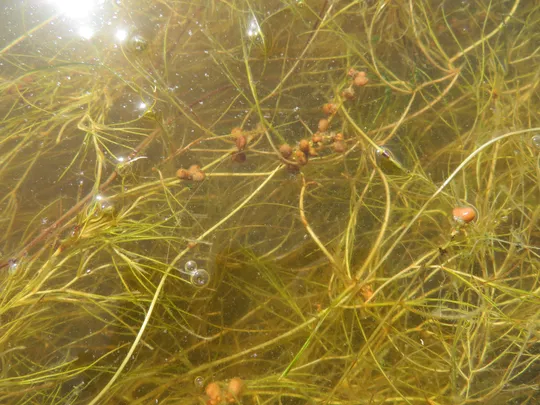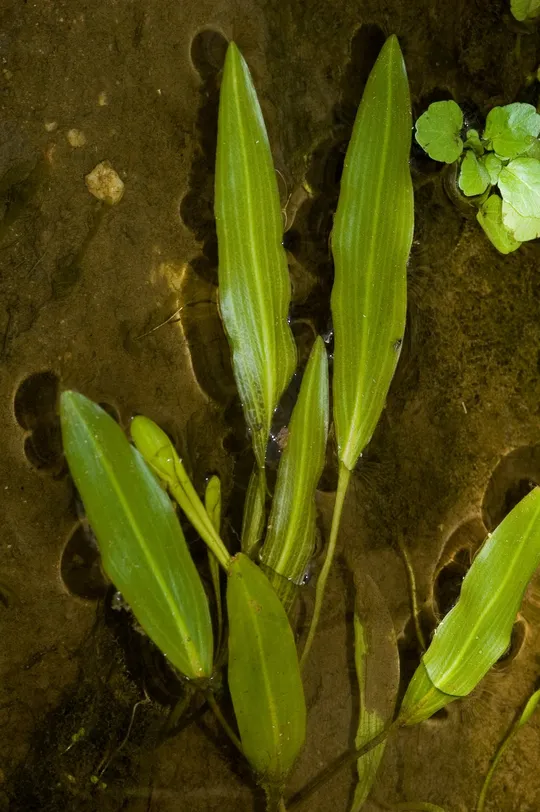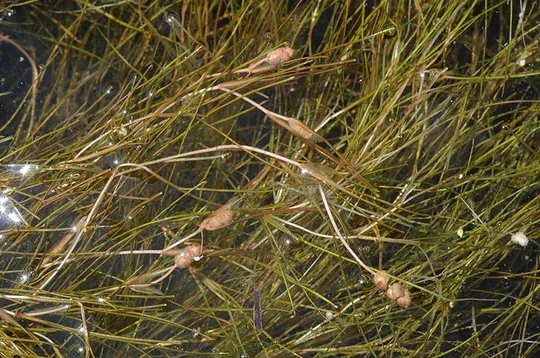Curled Pondweed, Curly-leaf Pondweed
Potamogeton crispus
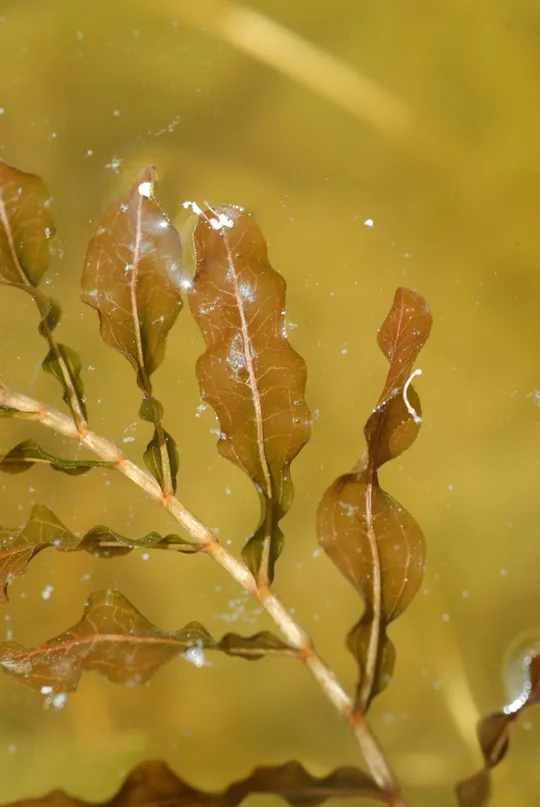
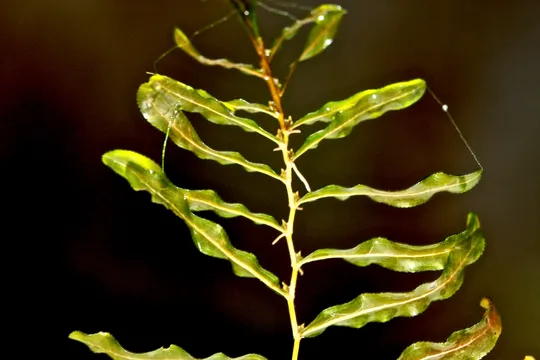
Potamogeton crispus was seen and
collected in the Golan Heights, Hula Valley and the Upper Galilee at five
sites, but it is estimated that only four of them have established populations.
In the northern Golan Heights, it grows at Lake Ram and in the southern Golan
Heights in the Hispin Pond. In 1996, Talia Oron found it in Agamon HaHula as a
new species for the Hula Valley. In 2000, it appeared in the Hula Reserve after
the valley was re-flooded and in 2009, Talia Oron and Sarig Gafni described it
in the Dalton Pond in the Upper Galilee. In the past, it also grew in the
Sharon, where it was collected in the Batih Pond northeast of Hadera in 1926,
but is now extinct there.
Potamogeton crispus grows throughout the world in a wide variety
of aquatic habitats: lakes, ponds, rivers, streams, canals and puddles.
The genus Potamogeton has some 100 floating or submersed species
whose distribution is cosmopolitan. In Israel, there are eight species of Potamogeton, which can be divided into three
groups based on their leaf shape and position: one species, P. nodosus, is the only one
with floating leaves. The other seven species are submersed, but their
inflorescence rises above the water surface. Four of the species have narrow
leaves: P. trichoides, P. berchtoldii and P.
filiformis.
Three of the species have broad leaves: P. lucens, P. perfoliatus and P. crispus.
There is only one
other genus in the Potamogetonaceae family – Groenlandia, which was formerly included
in the genus Potamogeton. Groenlandia has opposite leaves unlike the
alternate leaves in Potamogeton. In Israel, the species G. densa was
found a few times in a number of wetlands, but it is probably not natural in Israel
and only appears episodically at a few sites.
·
The number of regions (3) in which Potamogeton crispus grows in Israel
today is similar to what was found in the past. It is extinct from the Sharon
region, but on the other hand, it was found in recent years at two new sites in
the Upper Galilee (Dalton Pond) from where it had not been reported previously
and in the Hula Reserve. It may have been growing on these sites previously,
but had not been discovered. In any case, the number of verified sites is very
small.
·
Occasionally individual P. crispus plants are found at each site, but generally,
there is not enough information available regarding its population size.
·
The severe damage to wetlands in Israel
– their desiccation, deterioration of their water quality and pollution – constitutes
the major threat to existing populations.
·
Potamogeton crispus is protected in
the Hula Nature Reserve. It is likely that its presence in the Hula Valley may
ensure its survival. The populations in the Hispin and Dalton Ponds are located
in proposed but not officially declared reserves.
·
The plant is extremely common the
world over and is not globally endangered.
Existing Potamogeton crispus populations
should be tracked and monitored. The
populations in the Hula Reserve and the Hula Lake should be reinforced and
attempts made to naturalize the species in additional wetlands.
Potamogeton crispus is broadly
distributed in wetlands in Europe, Asia, Africa and Australia. It was introduced
to New Zealand, North and South America.
Potamogeton
crispus is a submersed aquatic plant found in Israel at a small number of sites
in the Golan Heights, Upper Galilee and the Hula Valley. The vulnerability of
aquatic habitats to human activity constitutes the species' major threat factor.
P. crispus is widely distributed in the world and
is not globally endangered.
ויזל, י. וליפשיץ, נ. 1979. צמחי מים בישראל. הוצאת רשות שמורות הטבע
Current Occupancy Map
| 1000 squre meter pixel | 5000 squre meter pixel | 10000 squre meter pixel | |
|---|---|---|---|
| number of observations | 0 | 0 | 0 |
| in total pixels | 0 | 0 | 0 |
| Family | Potamogetonaceae |
| Classification | On the near threatened species list |
| Ecosystem | Mediterranean humid |
| Chorotype | Cosmopolitan |
| Conservation Site | Agamon HaHula |
| Rarity |
1
3
6
|
|---|---|
| Vulnerability |
0
2
4
|
| Attractiveness |
0
0
4
|
| Endemism |
0
0
4
|
| Red number |
1
2.6
10
|
| Peripherality | 0 |
| IUCN category | DD EW EX LC CR EN VU NT |
| Threat Definition according to the red book | Near threatened |
 Based on:
Based on:

